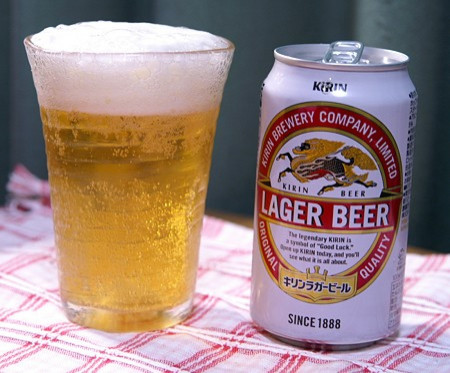Lager's Newfound Parent Yeast Was Born in Patagonian Forest: Study

The long-missing parent yeast of lager beer was newly discovered, and is believed to have sailed 7,000 miles from Patagonia in South America to Bavaria, to make a fortuitous microbial match at the birth place of the most popular alcoholic beverage of today, which underpins the $250 billion-a-year industry.
Across five continents, researchers have collected soil and bark, sap and abnormal growths called galls from trees until the yeast, named as Saccharomyces eubayanus, was identified as the missing player of yeast species that results in a hybrid yeast used in lager production.
The other parent, S. cerevisiae, has been known to scientists as the most useful yeast, used to ferment fruit and grains to make wine, cider and ale.
While S. cerevisiae prefers to dwell in warm temperatures, its partner yeast was believed to thrived in cooler temperatures.
Even among the 1,000 or so species of yeast known to science, scientists were unable to find this missing link for a long time.
The newfound yeast is prevalent in the beech forests of Patagonia, and has not been spotted elsewhere, according to Chris Hittinger, evolutionary biologist from the University of Wisconsin in Madison, who was a part of the research team. The forests, with daily lows of around 28 ºF, make perfect seedbed for the lager-brewing yeast.
The genome of the newfound yeast was sequenced and revealed as a near-perfect match as a parent of the lager yeast hybrid.
It proved to be distinct from every known wild species of yeast, but was 99.5 percent identical to the non-ale yeast portion of the lager genome, said Chris Todd, a University of Wisconsin-Madison genetics professor and a co-author of the study in the Proceedings of the National Academy of Sciences.
The Bavarians began the process of laagering in the 15th century, by brewing and storing their beer in caves or cellars and keeping it at a constant cool temperature, according to Hittinger. He said they would brew and store their beer in caves or cellars and keep it at a constant cool temperature, creating a new yeast.
That cold-loving hybrid then evolved into the modern lager yeasts that are used today in breweries throughout the world, acquiring several genetic changes that altered their sugar and sulfur metabolism.
Even though half of the lager-brewing yeast was unknown, the hybrid yeast could survive because brewers preserve some of the lager each time to seed the next batch with the same yeast.
The hybrid almost definitely formed accidentally and people adopted it because the beer came out differently, said Hittinger.
When eggs laid by insects on tree leaves stimulate sugar-rich bulbous materials called galls, the yeast strain is produced and spontaneously ferment, according to the scientists.
Those galls are very sugar-rich and ferment the tree. You can smell it in the forest, Hittinger said. Local people in this area would chop these galls off and eat them in salads.
When overmature, they fall all together to the (forest) floor where they often form a thick carpet that has an intense ethanol odor, most probably due to the hard work of our new Saccharomyces eubayanus, said Diego Libkind of the Institute for Biodiversity and Environment Research (CONICET) in Bariloche, Argentina.
Scientists still were unable to find how yeast traveled from South America to the caves and monasteries of Bavaria where lager beer was born. But lager beer brewing began at about the same time as the rise of trans-Atlantic trade, so the yeast may have hitched a ride on a sailing ship, perhaps on a piece of wood or in the stomach of a fruit fly.
Yeasts, which are microscopic fungi living off sugar, can concert it to carbon dioxide and alcohol through fermentation, leading up to creating beer.
© Copyright IBTimes 2024. All rights reserved.





















